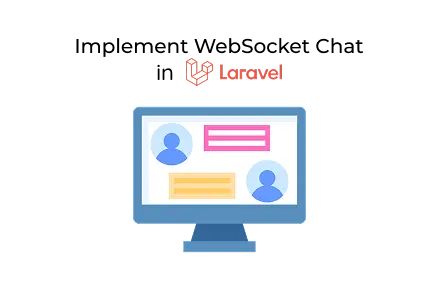Home - Scripts - Website Development

Implement real-time chat in Laravel using WebSockets with broadcasting, Echo, and events for smooth communication without page reloads.
Key Points
Real-time communication is a crucial aspect of modern apps, particularly in chat services, customer support, and collaboration tools. Laravel offers a powerful ecosystem for implementing WebSocket functionality with packages like beyondcode/laravel-websockets. This article guides you through the step-by-step process of setting up and creating a WebSocket-based chat in a Laravel application. Whether you're learning for personal projects or planning to hire Laravel developers, these steps will help you create scalable solutions.
The first step is to add a WebSocket package. The BeyondCode Laravel WebSockets package functions as a self-hosted Pusher alternative and easily integrates with Laravel. Install it through Composer:
After installation, publish the configuration and migration files:
This sets up the required database tables and configuration for running WebSockets. Developers working on web development Projects can benefit from this setup because it enables efficient communication channels within applications.
Laravel uses broadcasting to send events over channels. Update the .env file to enable Pusher driver:
Next, configure config/broadcasting.php to use the Pusher connection and set the host, port, and scheme options. This ensures Laravel events are broadcast over WebSockets. This approach aligns well with scalable mobile app development, where responsiveness is critical.
Events manage the broadcasting of messages to connected clients. Generate a new event:
Edit the event file to implement broadcasting:
Here, messages are sent over a chat channel, and each message includes both the user and the message content.
A controller can be used to handle chat messages and initiate broadcast events. Create one with:
Then define a method to send messages:
Finally, register a route in routes/web.php:
Laravel Echo makes it easy to subscribe to channels and listen for events. Install Echo and Pusher:
In resources/js/bootstrap.js, configure Echo:
To display chat messages, add a listener to your chat view:
Once you finish setting up, start the WebSocket server with:
If you’re broadcasting queued events, run the queue worker too:
This will enable real-time chat updates without page refreshes, making it a crucial feature. in both web development and mobile app development projects.
Implementing WebSocket chat in Laravel is straightforward with the help of laravel-websockets and Laravel Echo. By leveraging broadcasting, events, and frontend integration, you can build a fully functional chat system that updates instantly. Businesses aiming to create scalable applications often hire Laravel developers for projects that involve chat systems, live notifications, or collaborative tools. With this foundation, developers can expand into multi-room chats, private messaging, or advanced features to support a wide range of real-time applications.

©2025Digittrix Infotech Private Limited , All rights reserved.